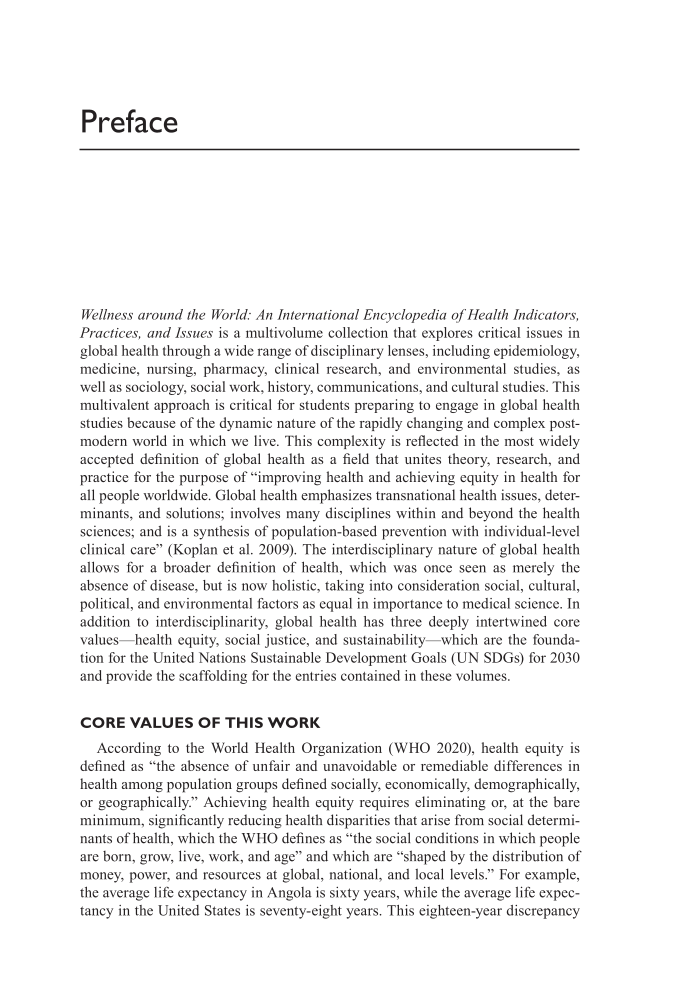Preface Wellness around the World: An International Encyclopedia of Health Indicators, Practices, and Issues is a multivolume collection that explores critical issues in global health through a wide range of disciplinary lenses, including epidemiology, medicine, nursing, pharmacy, clinical research, and environmental studies, as well as sociology, social work, history, communications, and cultural studies. This multivalent approach is critical for students preparing to engage in global health studies because of the dynamic nature of the rapidly changing and complex post- modern world in which we live. This complexity is reflected in the most widely accepted definition of global health as a field that unites theory, research, and practice for the purpose of “improving health and achieving equity in health for all people worldwide. Global health emphasizes transnational health issues, deter- minants, and solutions involves many disciplines within and beyond the health sciences and is a synthesis of population-based prevention with individual-level clinical care” (Koplan et al. 2009). The interdisciplinary nature of global health allows for a broader definition of health, which was once seen as merely the absence of disease, but is now holistic, taking into consideration social, cultural, political, and environmental factors as equal in importance to medical science. In addition to interdisciplinarity, global health has three deeply intertwined core values—health equity, social justice, and sustainability—which are the founda- tion for the United Nations Sustainable Development Goals (UN SDGs) for 2030 and provide the scaffolding for the entries contained in these volumes. CORE VALUES OF THIS WORK According to the World Health Organization (WHO 2020), health equity is defined as “the absence of unfair and unavoidable or remediable differences in health among population groups defined socially, economically, demographically, or geographically.” Achieving health equity requires eliminating or, at the bare minimum, significantly reducing health disparities that arise from social determi- nants of health, which the WHO defines as “the social conditions in which people are born, grow, live, work, and age” and which are “shaped by the distribution of money, power, and resources at global, national, and local levels.” For example, the average life expectancy in Angola is sixty years, while the average life expec- tancy in the United States is seventy-eight years. This eighteen-year discrepancy
Document Details My Account Print multiple pages
Print
You have printed 0 times in the last 24 hours.
Your print count will reset on at .
You may print 0 more time(s) before then.
You may print a maximum of 0 pages at a time.















































































































































































































































































































































































































































































































































































































































































































































































































































































































































































































































































































